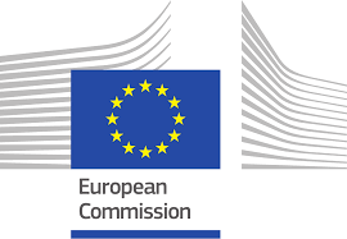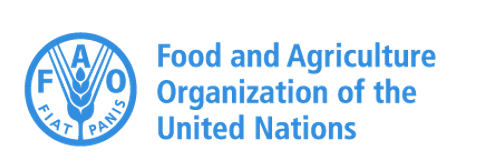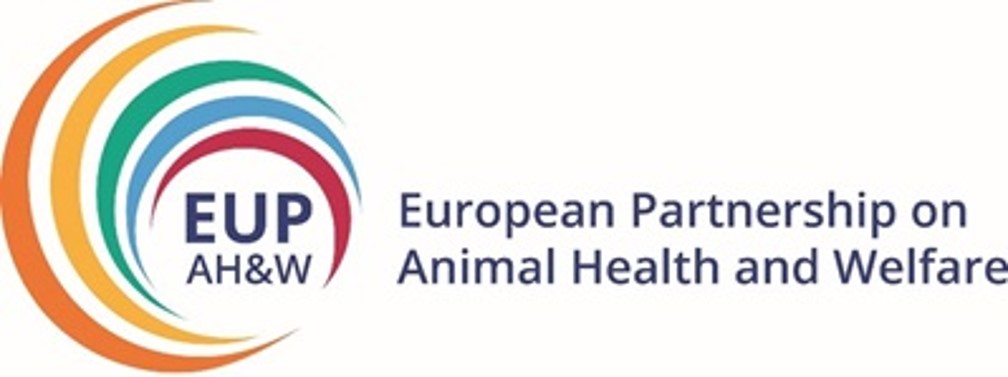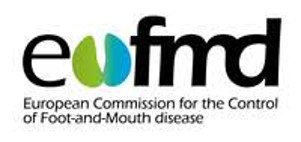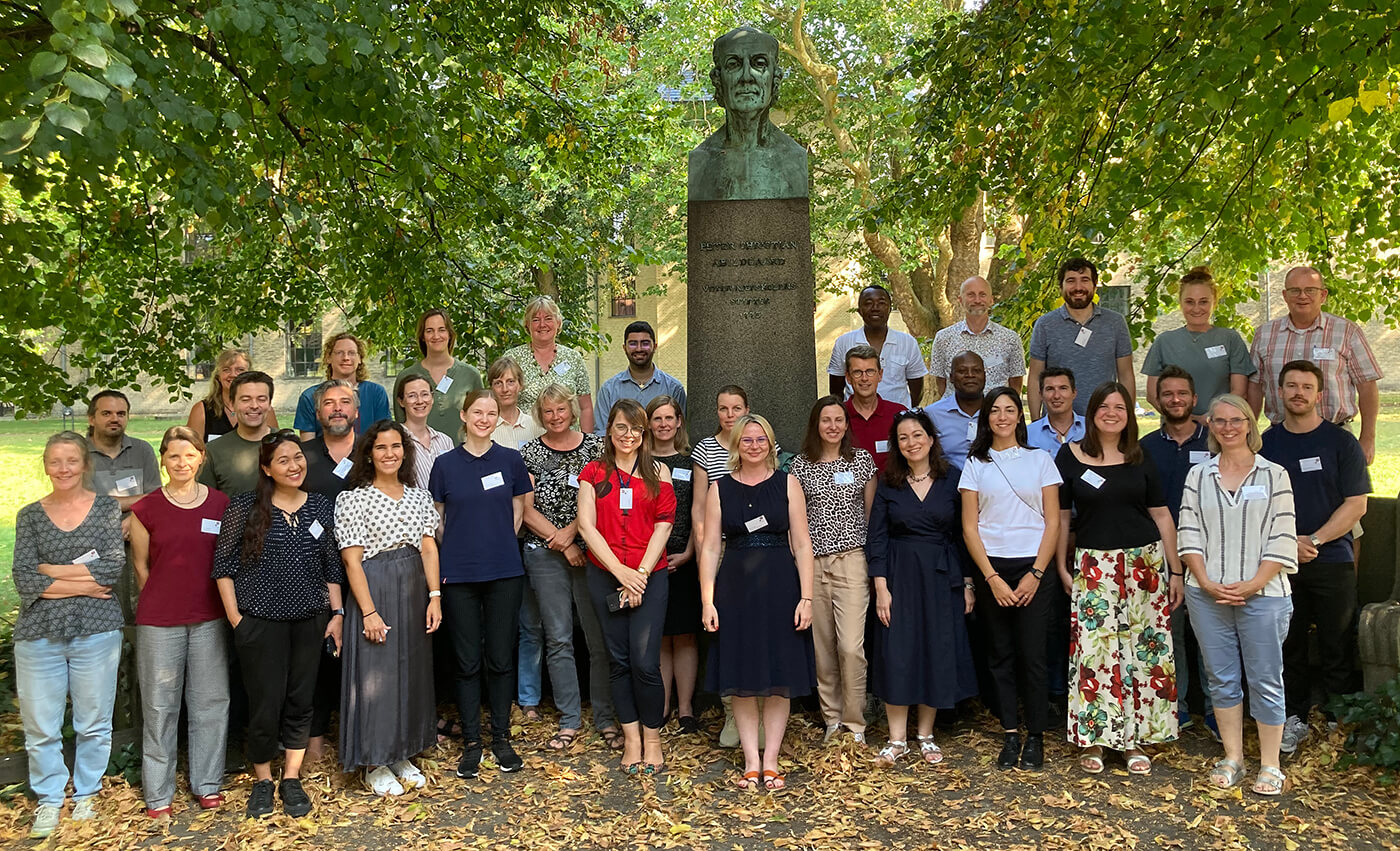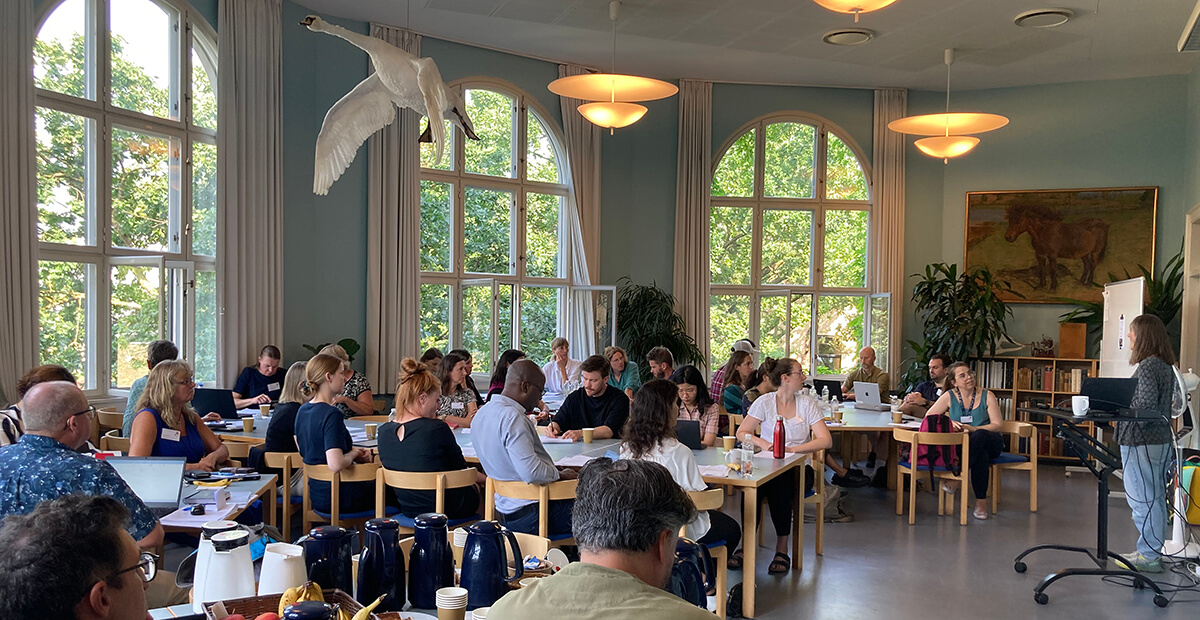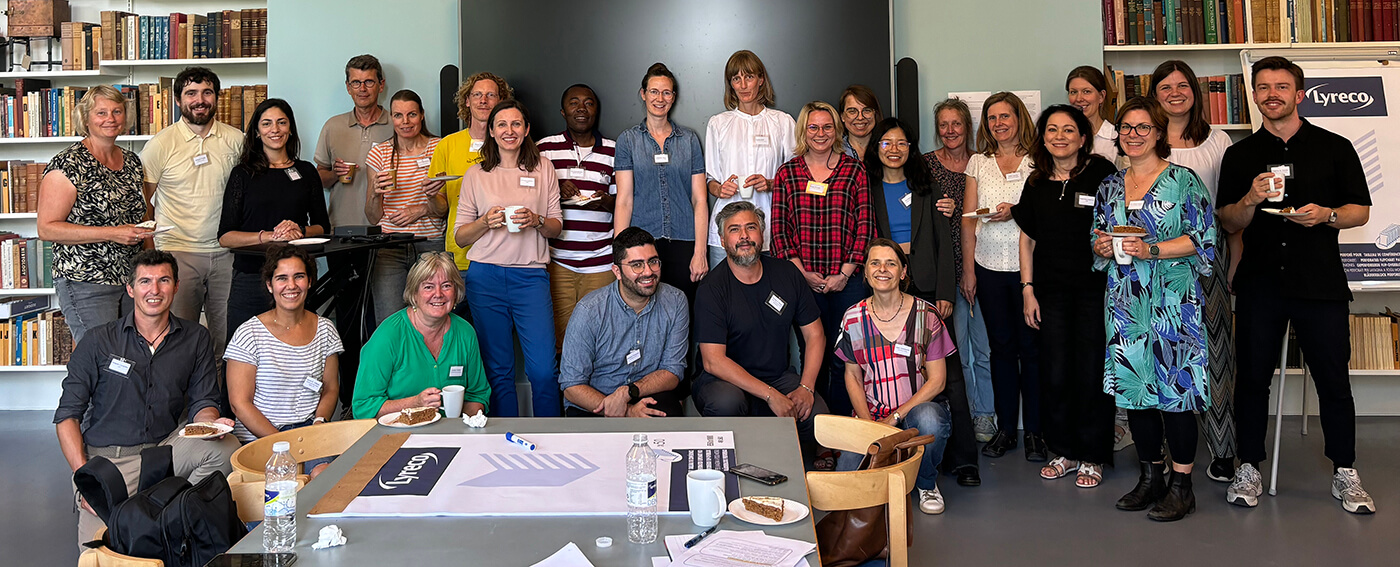TIPTON group
The Research Group for Infectious Disease Epidemiology & Animal Health Economics (TIPTON Group) has the goal of better understanding, forecasting, and preventing infectious diseases in the veterinary and public health sectors.
TIPTON’s primary focus is to promote the application of effective, efficient, and evidence-based preventative and/or therapeutic interventions against infectious agents by developing cutting-edge computational inference and simulation models to address queries related to epidemiology and economics posed by veterinary authorities and the livestock sector in Denmark and internationally. We also support our colleagues in the application of computational techniques such as statistical, inference and artificial intelligence analysis of big datasets for different topics.
The group aims to advance global projects in infectious epidemiology and animal health economics through trans- and interdisciplinary collaborations with other divisions, departments, and institutions.
- Beate Conrady (Veterinary Health-Informatics and -Economics)
- Ofosuhene Okofrobour Apenteng (Mathematical epidemiologist)
- Philip Rasmussen (Economist)
- Yanchao Cheng (Disease modeler)
- Mossa Merhi Reimert (Computational disease modeler)
- Ana Rita Pinheiro Marques (Epidemiologist and app developer)
- You Chang (Disease modeler)
- Dima Farra (PhD Student in Animal Health Economics)
- PhD Student (Data Scientist)
-
New 3-year Position available from 1st January 2026
- Elma Dervic (Engineer) from the Complexity Science Hub Vienna, Austria
- Valentina Suprani (Economist) from University of Bologna, Italy
- Eleftherios Meletis (Epidemiologist) from the University of Thessaly, Greece
- Emanuele Massaro (Environment engineer of complex systems) from the European Commission. Joint Research Centre (JRC): Forests and Bio-Economy Unit
- We are associated with the Complexity Science Hub Vienna, Austria
- Franz Ferdinand Roch
- Moritz Hartmann
- Viktoria Neubauer
- Chaughtai Muhammad Sharjeel
Master Students
- Camilla Bro Gregersen (2024)
- Kristine Berg Hansen (2023)
- Michael Brunauer (2021: Published in Animals)
- Stefan Thomaser (2021)
- Alexander Gense (2020)
- Marc Dangelmaier (2020)
- Elisabeth Kattwinkel (2019:Published in Veterinary Records)
- Katharina Snoek (2018)
- Scharnböck, Bettina (2018: Published in Nature Scientific Reports)
- Franz-Ferdinand Roch (2018)
- Veronika Richter (2017: Published in The Veterinary Journal as best Paper)
- Bianca Gindl (2015)
Former PhD Students
- Johannes Klinger (2018-2021)
- Tatiana Marschik (2018-2021)
- Veronika Richter (2020-2023)
The TIPTON Group is currently involved in the following projects:
- Cost Action: Large-scale Interdisciplinary Alliance on Nature-based SoLutions and Health: Indicators, InequalitY and Innovation (LILY) (Project duration: 10/2024-10/2028): Nature-based Solutions (NbS) are instrumental in European climate change mitigation and adaptation strategies. Through creating ecosystems, NbS can have positive and negative impacts on the health of people, animals and the environment, i.e. co-benefits and unintended consequences. As NbS are increasingly integrated into policy and implemented on the ground, it is urgently needed to adopt evidence-based approaches to their design and implementation, which minimize maladaptation and mislabeling practices, particularly in the health domain.
- Epi-Flu: Preparedness tools for avian influenza in cattle (2025-2027): The three-year project aim is to develop an effective preparedness tool to manage Avian Influenza outbreaks in the Danish cattle population in cooperation with SEGES. The project is financed by Cattle Tax Fund and the Milk Tax Fund.
Work Package 1: Risk Assessment Tool for the Introduction of AIV (2025)
Development of a risk assessment tool that can indicate the geographical risk of AIV transmission (spillover) from wild birds to cattle. High- and low-risk areas in Denmark will be identified.
Work Package 2: Model of AIV Transmission Within and Between Cattle Farms (2026)
Development of a model to predict AIV transmission patterns within and between cattle farms after a potential introduction to cattle farming.
Work Package 3: Model for AIV Transmission Between Multiple Animal Species (2026-2027)
A tool based on a network analysis of the potential spread between multiple animal species (between cattle and poultry) to calculate the effect of transmission. Susceptibility to AIV types is taken into account.
Work Package 4: Control Methods for AIV (2026-2027)
Analysis of the cost-effectiveness of control methods (e.g., time-limited movement restrictions, preventive vaccination, culling of infected herds, improved biosecurity measures).
Work Package 5: Data Panel for Illustrations for End Users (2025-2027)
The results from models and tools developed in Activities 1-4 will be presented illustratively in an online data panel (dashboard). The tool will be tested by farmers and cattle industry stakeholders involved in veterinary preparedness.
More information about the project you can find here (in Danish)
- EuFMDiS/FAO Modeling Centre (2025-2026)
Support the work of the EuFMDiS Modeling Center in terms of responding to requests by the EUFMD Member States.
We will provide technical support to developing a European Lumpy Skin Disease model component, using Denmark as the test/pilot country. This will include the preparation of European insect vector activity layers.
Further, we will be testing and recommend any improvement of the carcasses disposal component of the model including the collection of necessary data, to embed the new functionality in the pan-European model.
- Monitoring of diagnostic testing during an FMD outbreak in EuFMDiS (MISSIONS) (2025-2026):
New functionality to track sampling and diagnostic testing requirements during an FMD outbreak has been identified as an important addition to the future development of the EuFMDiS model. This will not only allow the evaluation of surveillance workloads and diagnostic test requirements for planning purposes, it will also allow different sampling approaches and testing regimes to be compared.
- WiLiMAN-ID Horizon Europe Project (2023-2028): Ecology of wildlife, livestock, human and infectious diseases in changing environments. In this project, we are going to develop a preparedness index for early detection and outbreak response of infectious diseases in Europe and develop joint socio-economic metric for the impacts of animal infectious diseases. Further, we are optimizing interventions for emerging and endemic diseases based on mechanistic modeling and optimization theory in disease free-zones and infected zones. In this project we will contribute in modeling challenges between different modelling groups across different EU countries to support the decisions of veterinary authorities related to outbreak response. In this project we work together with 17 partners from 13 EU countries.
- Biosecure Horizon Europe Project (2023-2026): Enhanced and cost-effective biosecurity in livestock production. In this project, we will develop farm-level risk assessment models and economically assess biosecurity measures at the farm level and consider in the economic assessment the issue of double-counting of biosecurity effects and to inform farmers about uncertainties in the disease burden estimator with and without implementation of biosecurity measures. Further, we will model epidemiological impact of biosecurity practices at territorial level and assess the economic impacts of biosecurity policy scenarios. In this project we work together with 14 partners from 11 countries to improve the knowledge of the impact of biosecurity measures on disease introduction and spread as well as analyze associated impacts on cost- and production function for farmers.
- ENHANCE DANIDA Project (2023-2028): In this project, we will investigate the climate influence on zoonoses at human-livestock-wildlife interfaces in the transboundary region between Kenya and Tanzania. In this project we work together mainly with colleagues from Kenya and Tanzania.
-
PAHW (2024-2027):
The TIPTON Group is involved in three WPs of the European Partnership on Animal Health and Welfare.- Rapid Risk Assessment: Improvement of epidemic intelligence methodologies (Chair: Beate Conrady)
- Assess the economic and societal burden of selected priority diseases and production diseases
- Biosecurity measures to prevent and control AID on farm and during transport taking into account effects on animal welfare
- EUFMD Project (2021-2024): In this project, we are investigating and simulating different outbreak scenarios and intervention measures including capacities to manage FMD outbreaks in Denmark and to support veterinary authorities to set up an appropriate resource planning for Denmark. In this project we work together with the Danish Veterinary and Food Administration and FAO.
- PRRS Spread model (2022-2025): In this project, we are going to develop a PRRS spread model for Denmark by considering the spread via airborne, direct and indirect contacts, local transmission and impact of mitigation measures such as vaccination and quarantine of traded pigs as well as the effect of different risk areas. The main aim is to identify the best mitigation measures and to predict new infection in a local context based on new potential implemented intervention measures to reduce PRRS infection in Denmark. In this project we work together with SEGES Innovation and Danish Agriculture and Food Council.
- Cost Better (2022-2025): Biosecurity Enhanced Through Training Evaluation and Raising Awareness. In this project, we work on the effectiveness and efficiency of different biosecurity measures to reduce disease introduction and disease spread for selected animal diseases.
- Salmonella Dublin Spread model (2022-2025): In this project, we investigate the network properties over time between cattle farms in Denmark and quantify the infection probability by considering different transmission pathways. These outcomes will be used to feed the Salmonella Dublin Spread Model for Denmark and to investigate the impact of different mitigation measures to reduce the prevalence of S. Dublin in the cattle population by considered already existing implemented mitigation measures. In this project we work together with SEGES Innovation, DTU and the Danish Veterinary and Food Administration.
- Social network analysis reveals the failure of between-farm movement restrictions to reduce Salmonella transmission
- Global losses due to dairy cattle diseases: A comorbidity-adjusted economic analysis
- Ranking the effectiveness of worldwide COVID-19 government interventions
- Predicting Culex pipiens/restuans population dynamics using a weather driven dynamic compartmental population model
- Using stochastic dynamic modelling to estimate the sensitivity of current and alternative surveillance program of Salmonella in conventional broiler production
- Bidirectional movement of emerging H5N8 avian influenza viruses between Europe and Asia via migratory birds since early 2020
- Estimating the burden of multiple endemic diseases and health conditions using Bayes’ Theorem: A conditional probability model applied to UK dairy cattle
- Simulation of Foot-and-Mouth Disease Spread and Effects of Mitigation Strategies to Support Veterinary Contingency Planning in Denmark
- Chikungunya beyond the tropics: where and when do we expect disease transmission in Europe?
- Assessing the effect on the public health risk of current and alternative border control of Salmonella Typhimurium and Enteritidis in imported frozen poultry meat in Jordan
- A systematic worldwide review of the direct monetary losses in cattle due to bovine viral diarrhoea virus infection
- Economic premiums associated with Mycobacterium avium ssp. paratuberculosis-negative replacement purchases in major dairy-producing regions
- Evaluating the risk for Usutu virus circulation in Europe: comparison of environmental niche models and epidemiological models
- A meta-analysis of bovine viral diarrhoea virus (BVDV) prevalences in the global cattle population
- Economic losses due to Johne's disease (paratuberculosis) in dairy cattle
DISSEMINATION AT INTERNATIONAL CONFERENCES IN 2025
1. Center for Research in Cattle Production and Health (CPH Cattle), 30 January 2025.
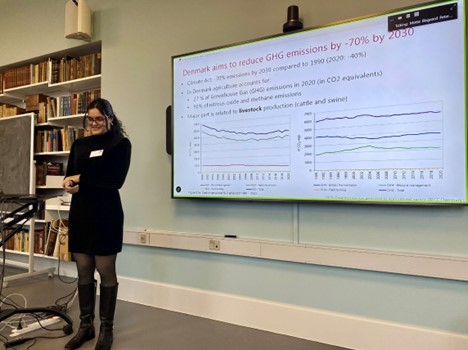 Oral presentation by Dima Farra with the title: Assessing Greenhouse Gas Emissions from Danish Dairy Farms: Estimation Methods and Key Challenges
Oral presentation by Dima Farra with the title: Assessing Greenhouse Gas Emissions from Danish Dairy Farms: Estimation Methods and Key Challenges
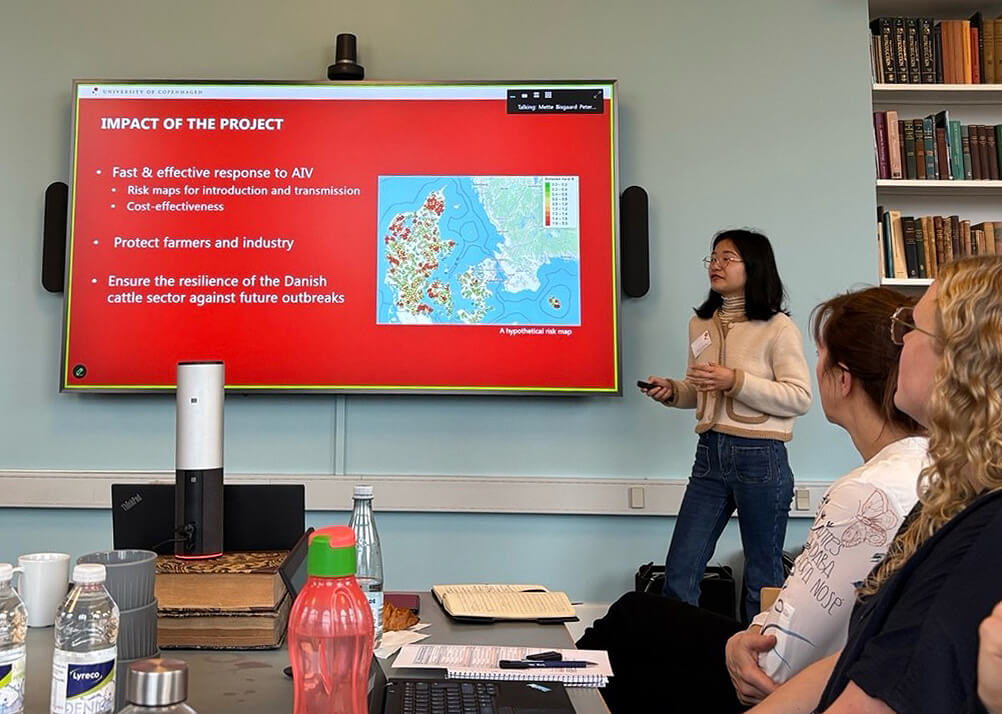 Oral presentation by You Chang with the title: Epi-Flu: Contingency Tools for Avian Influenza in Cattle
Oral presentation by You Chang with the title: Epi-Flu: Contingency Tools for Avian Influenza in Cattle
2. FMD Prevention: Safeguarding Livestock, Livelihoods and Economies, 17th- 19th of March 2025, Curitiba, Paraná, Brazil
Invited talk by Beate Conrady with the title: The economic impact of FMD in Europe.
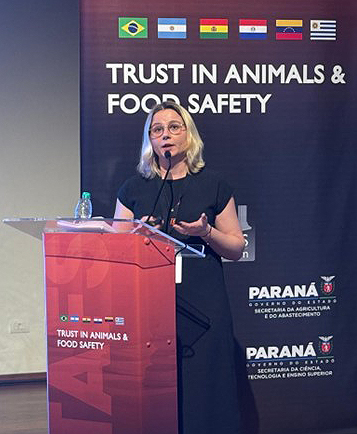

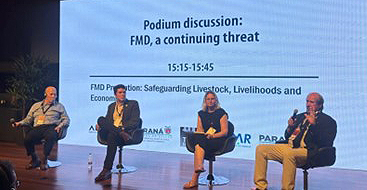
3. SVEPM Conference 2025, 26th to 28th March, Berlin
 Pitch Poster presentation by You Chang with the title: Unraveling PRRS Transmission Between Herds: Modeling Intervention Impacts in Denmark
Pitch Poster presentation by You Chang with the title: Unraveling PRRS Transmission Between Herds: Modeling Intervention Impacts in Denmark

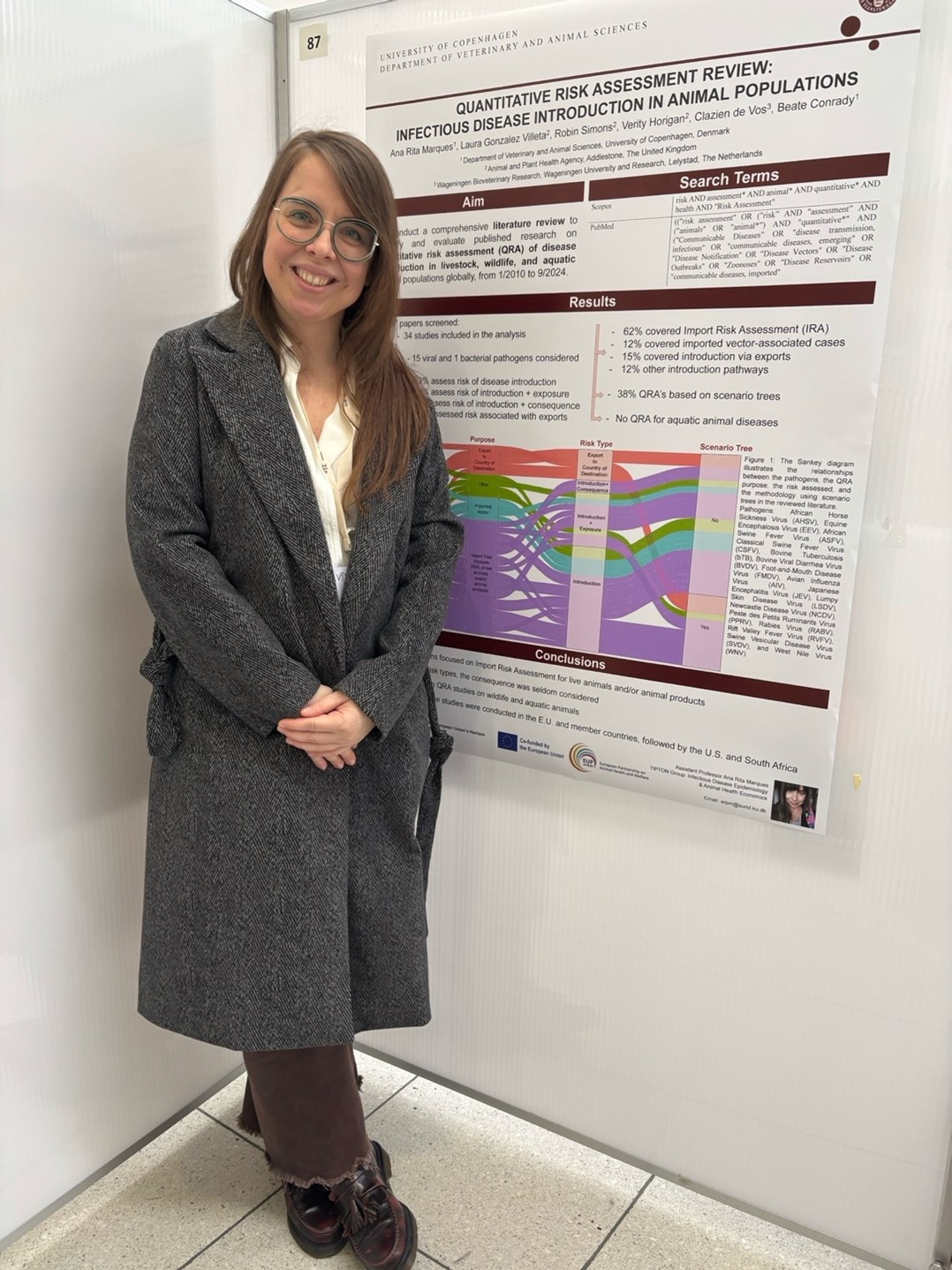 Pitch Poster presentation by Ana Rita Marques with the title: Quantitative risk assessment review: infectious disease introduction in animal populations
Pitch Poster presentation by Ana Rita Marques with the title: Quantitative risk assessment review: infectious disease introduction in animal populations
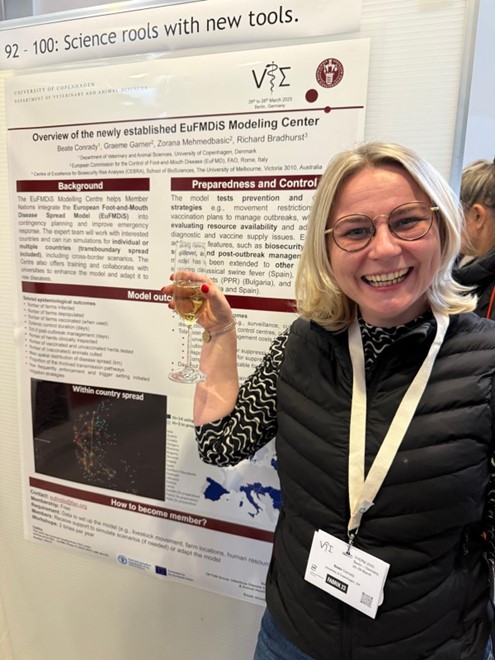 Pitch Poster presentation by Beate Conrady with the title: Overview of the newly established EuFMDiS Modeling Center.
Pitch Poster presentation by Beate Conrady with the title: Overview of the newly established EuFMDiS Modeling Center.
4. The 11th International Symposium on Avian Influenza from 24-26 June 2025in St. John's, Newfoundland, Canada
 Poster presentation by You Chang with the title: Assessing the Spatial and Temporal Risk of HPAIV Transmission to Danish Cattle via Wild Birds.
Poster presentation by You Chang with the title: Assessing the Spatial and Temporal Risk of HPAIV Transmission to Danish Cattle via Wild Birds.
DISSEMINATION AT INTERNATIONAL CONFERENCES IN 2024
1. CPH Pig Seminar, Up to Date with Pig Research, 1. February, Copenhagen, Denmark
Beate Conrady gave an oral presentation about: The PRRS Spread Model for Denmark driven by pig movements and mitigation measures.
2. Kick-off meeting of the European Partnerships on Animal Health and Welfare, 26-27. February, Brussels, Belgian
Oral presentation by Beate Conrady with the title: Rapid Risk Assessment: Improvement of epidemic intelligence methodologies.
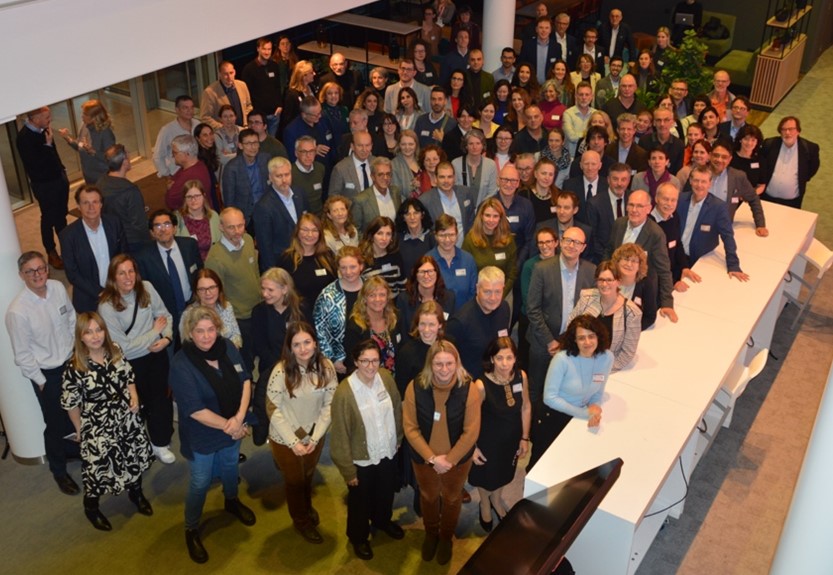
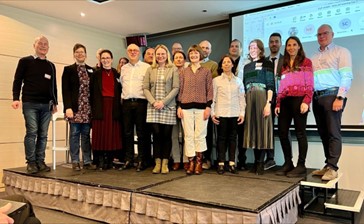
3. Launch event of the European Partnerships on Agroecology and on Animal Health and Welfare, European Commission, 28 February, Brussels, Belgian
Beate Conrady participated in the panel discussion of the European Partnerships on Animal Health and Welfare at the European Commission.

4. SVPME Conference 20-22 March 2024 - Uppsala, Sweden
The TIPTON Group presented 2 oral presentations and 2 posters at the SVPME Conference in Uppsala, Sweden.
Poster presentation by Ofosuhene Okofrobour Apenteng with the title: Predicting Culex pipiens/restuans population dynamics using a weather driven dynamic compartmental population model.
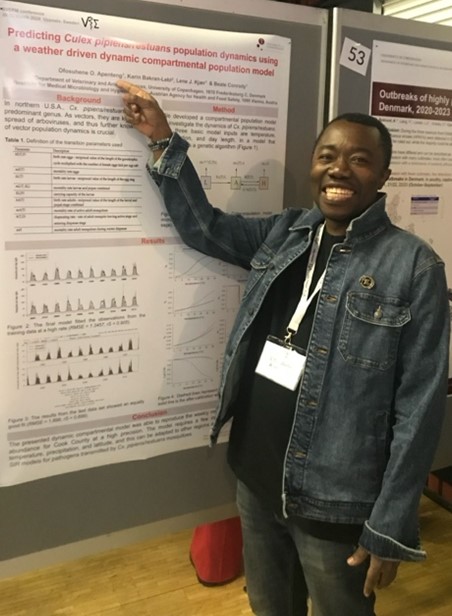
- Poster Pitch presentation by Beate Conrady with the title: European partnership on animal health and welfare: Initiatives for Rapid Risk Assessment.
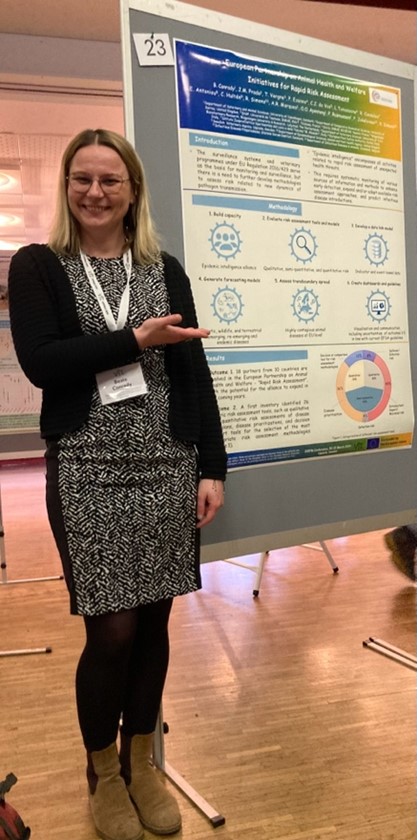
- Oral presentation by Beate Conrady with the title: Impacts of cattle movement network activities on the spread of Salmonella Dublin between cattle farms in Denmark between 2010 and 2020.
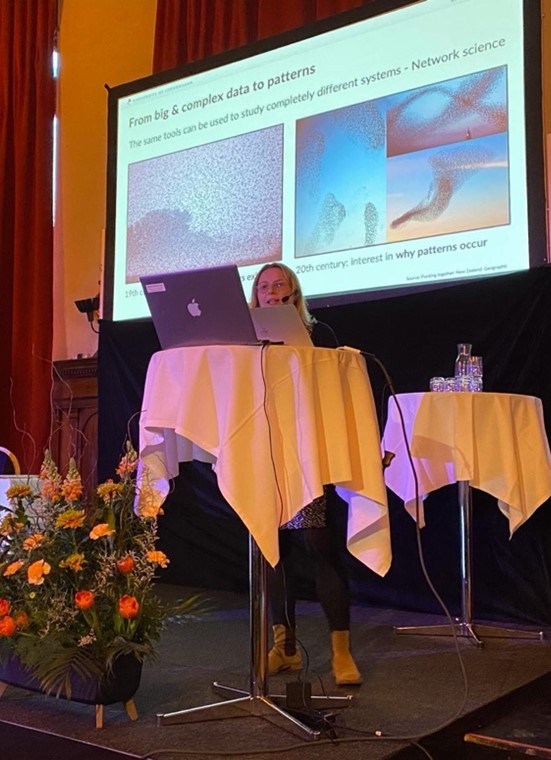
- Oral presentation by Philip Rasmussen with the title: Can the Danish Veterinary Authorities meet their key performance indicator targets in the event of a foot-and-mouth disease outbreak?
5. Complexity Science Hub Vienna, 15 May 2024, Vienna, Austria
Oral presentation by Beate Conrady with the title: Multi-Site Business Cluster-Network Analysis of Danish Cattle farms.
6. WILIMAN-ID Annual Kick off Meeting, 22-24. May 2024, Copenhagen, Denmark
Hosted by Beate Conrady (UCPH).
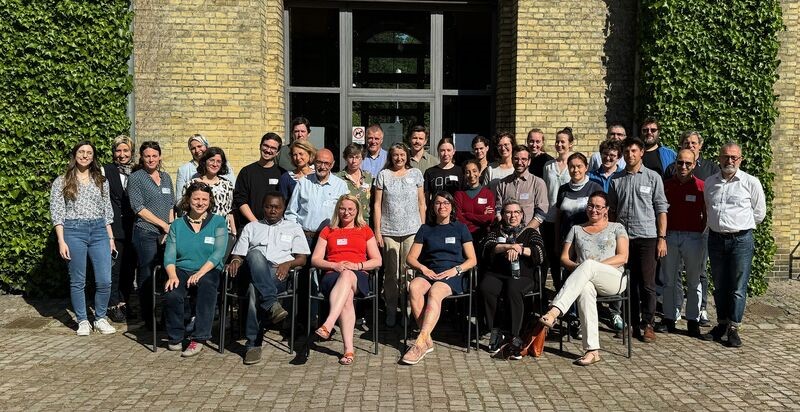
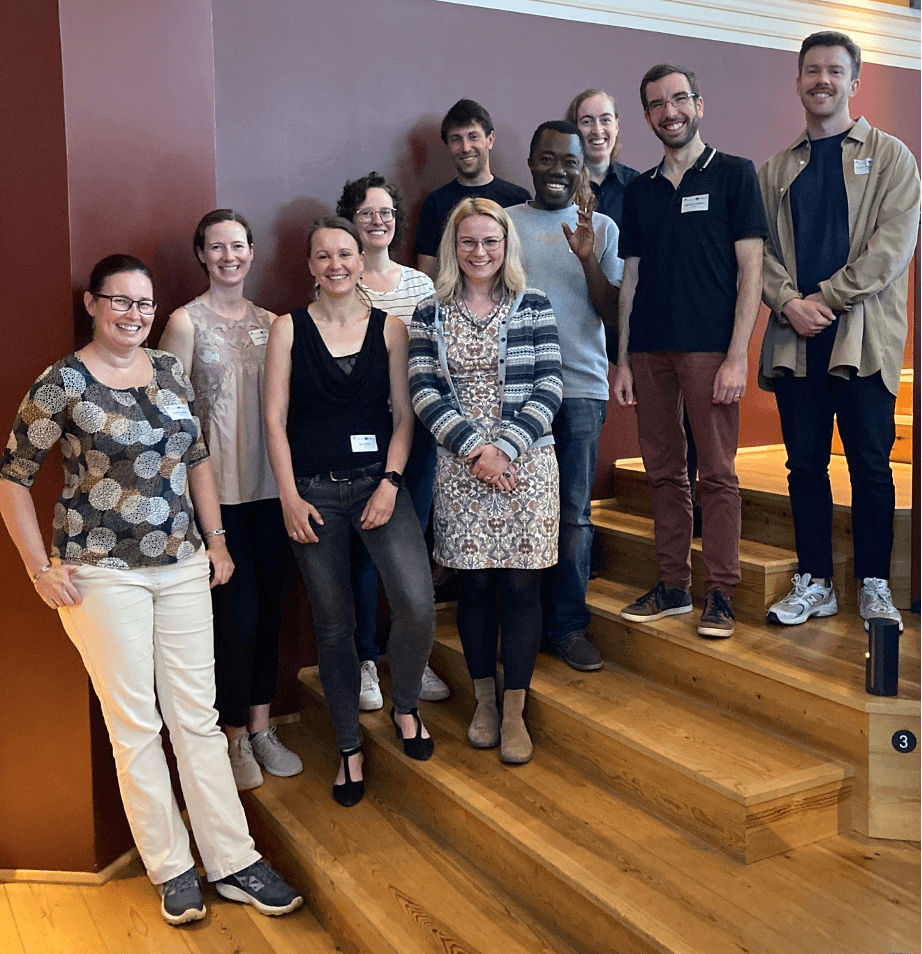
7. Biosecure Annual Kick off Meeting, 28-29. May 2024, Tallinn, Estonia
Oral presentation by Beate Conrady with the title: Use of disease occurrence, animal movement, wildlife and other public available databases to create biosecurity risk maps.
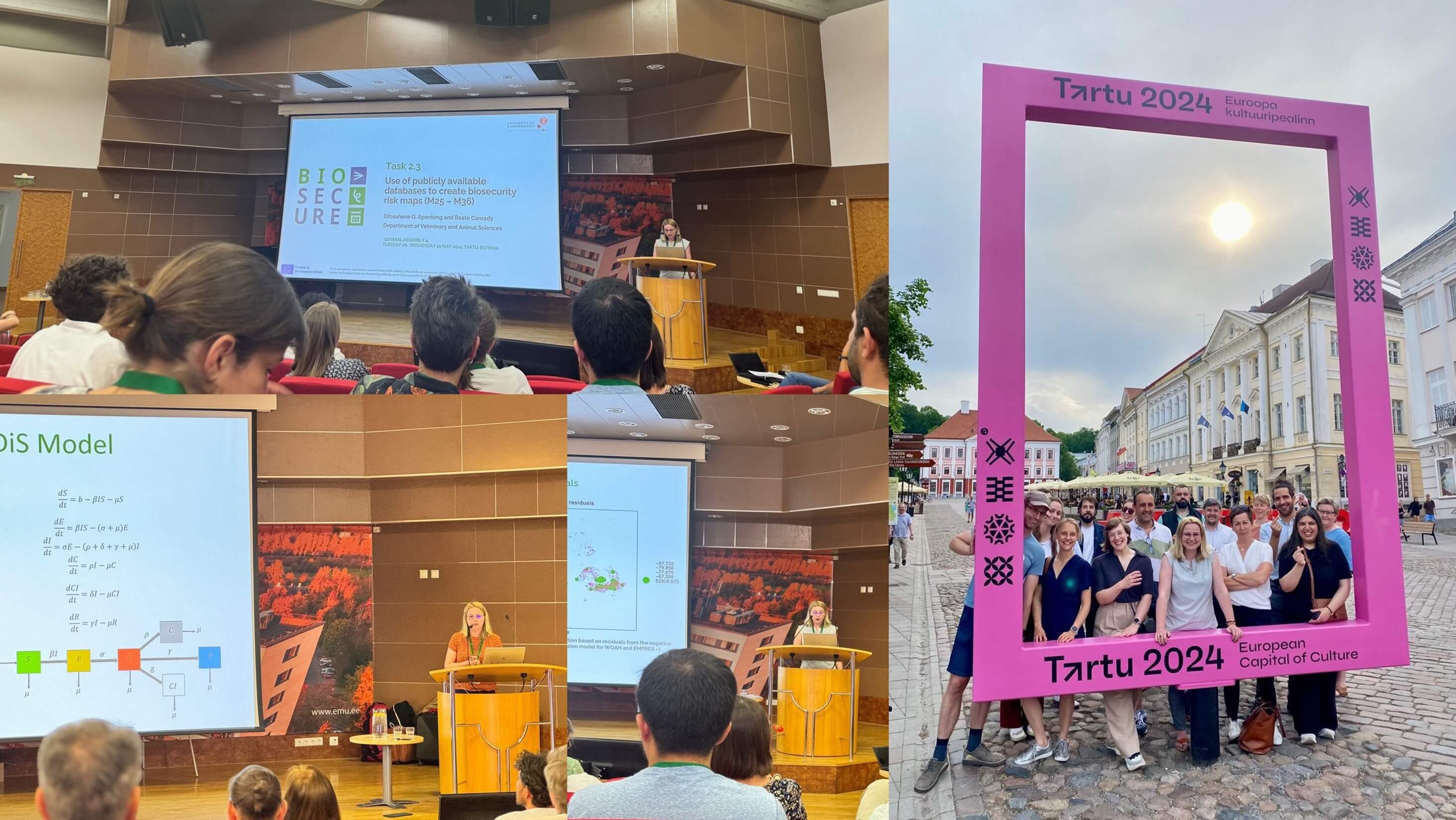

8. European Partnership on Animal Health & Welfare Annual Kick off Meeting, 5-6 June 2024, Thessaloniki, Greece
Invited Oral presentation by Beate Conrady: Animal Infectious Diseases: Terms, Methods, and Activities.
Poster presentation by Dima Farra with the title: The economics of preventing and providing prophylaxis for selected diseases
Poster presentation by You Chang with the title: Data link model for epidemic intelligence methodologies
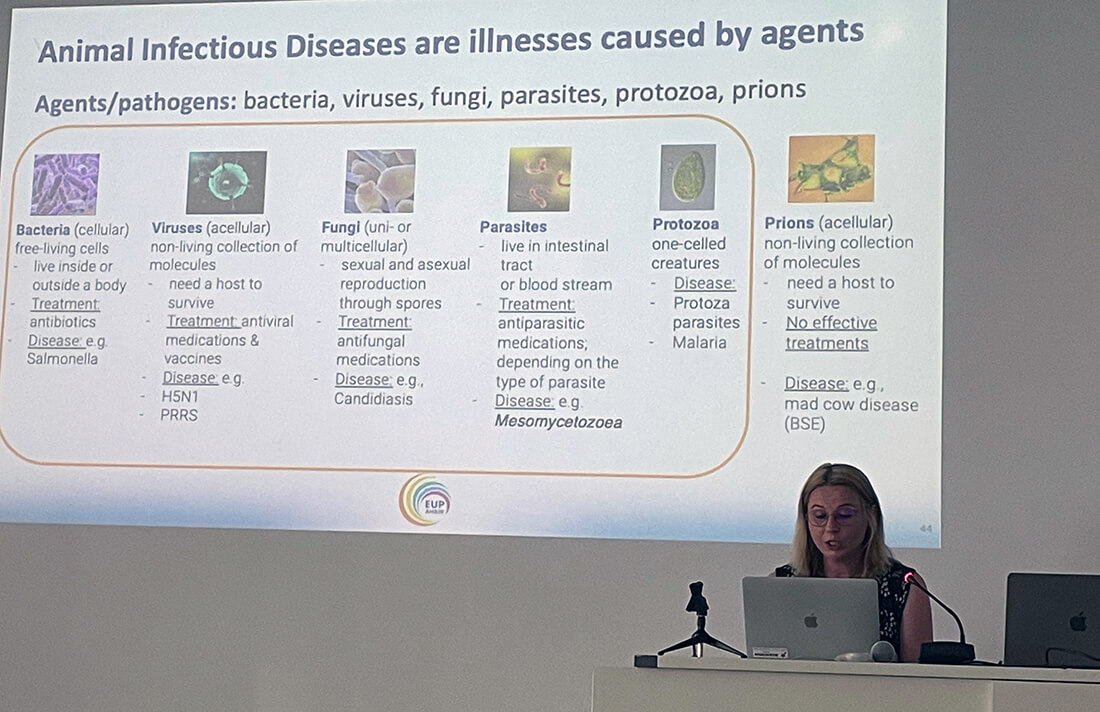
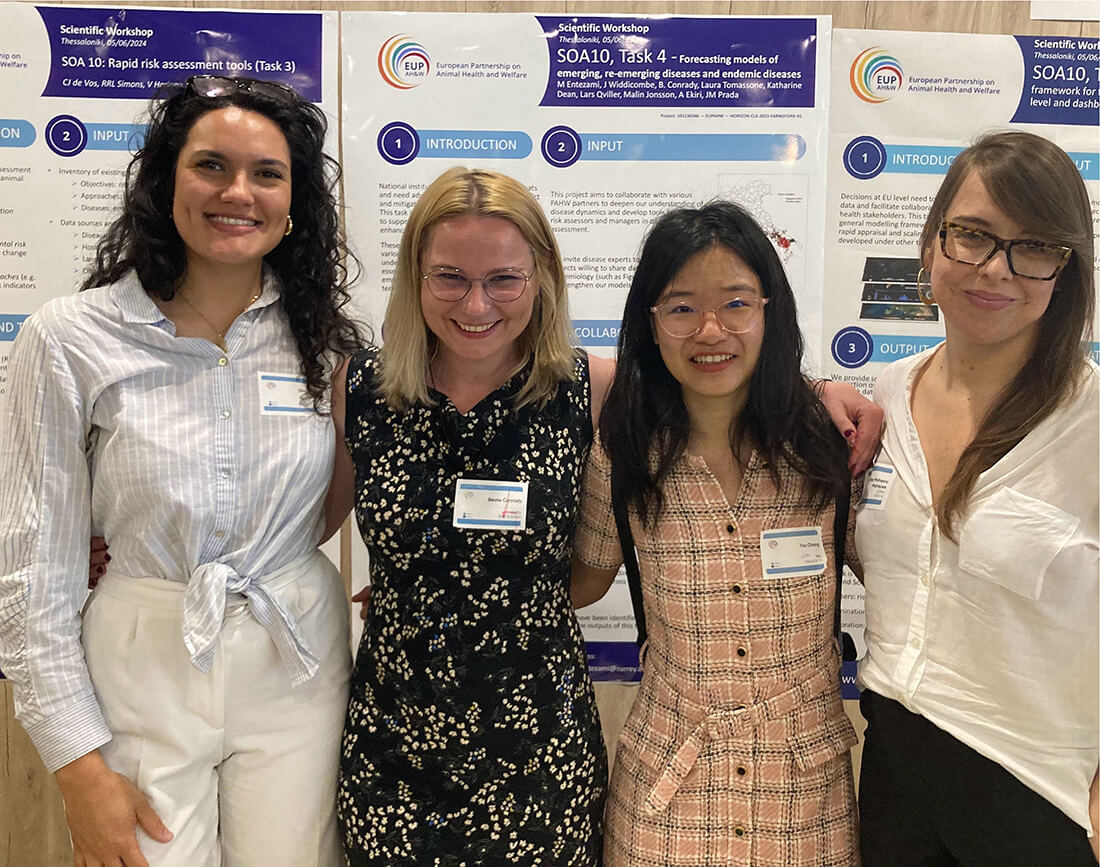
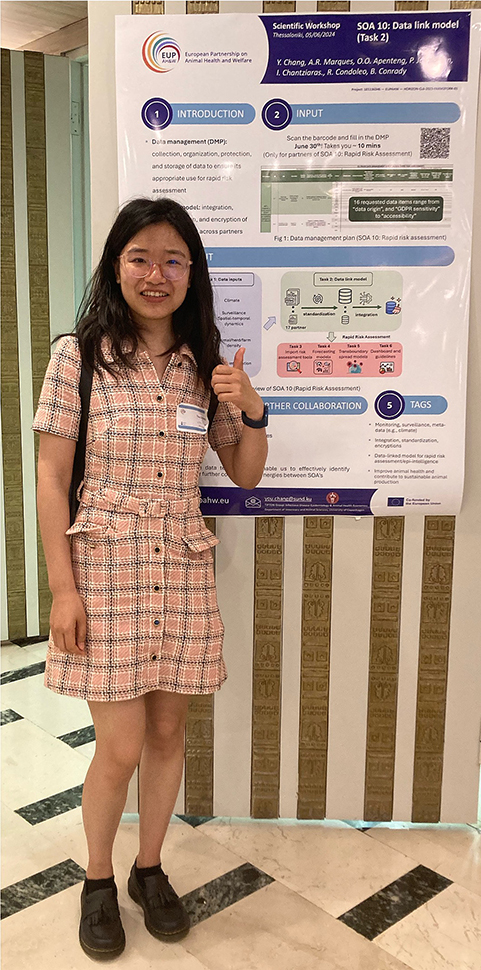
9. Invited Lecture by Beate Conrady at the Institute of Veterinary Medicine and Animal Sciences. Estonian University of Life Sciences, 8th August, Tallinn, Estonia
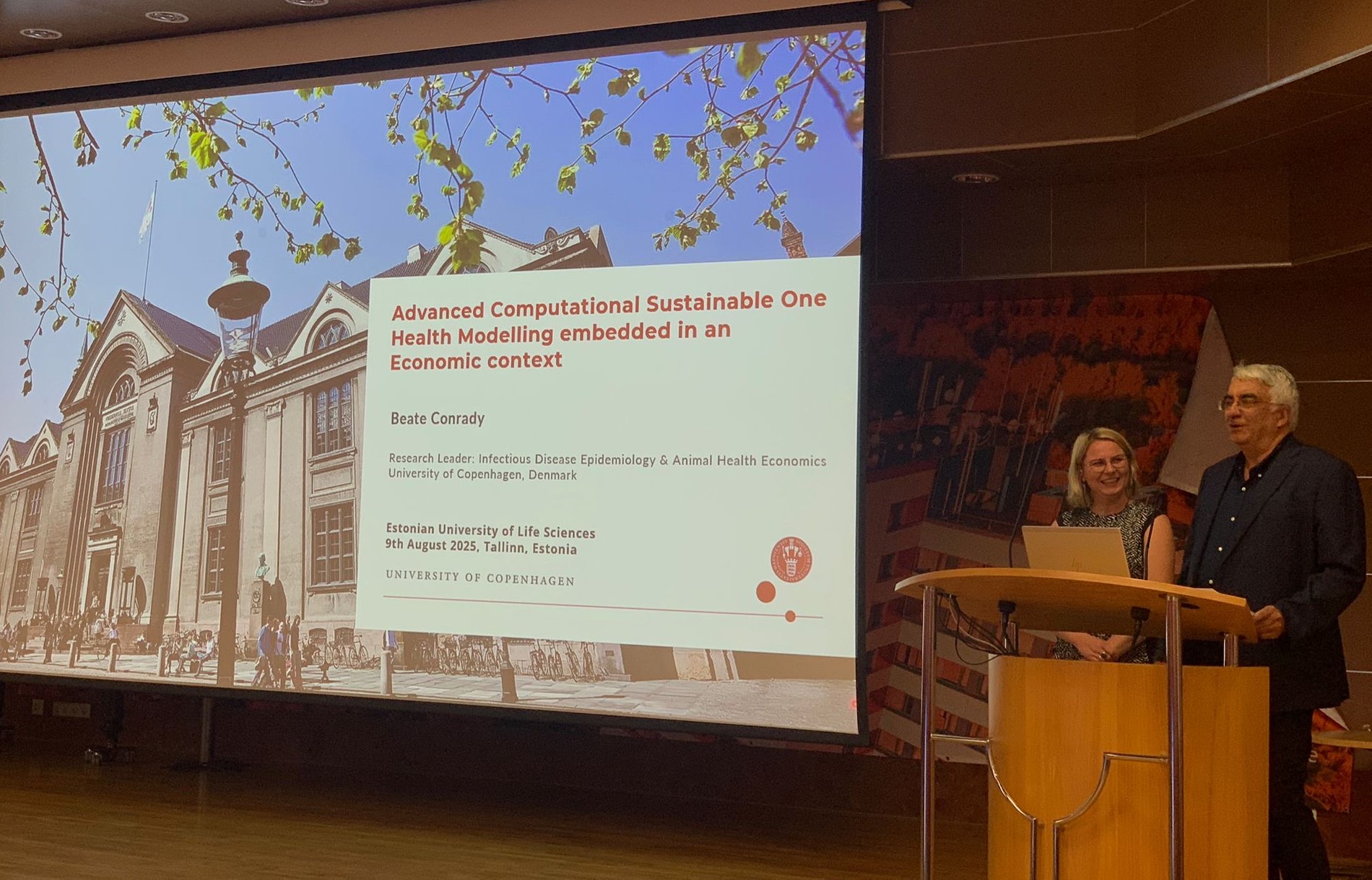
10. Invited Panel discussion at the One Health panel at Opinion Festival in Estonia, under the topic “Strengthening One Health: Addressing Cross-border Threats”, Opinion Festival, 9th August, Paide, Estonia
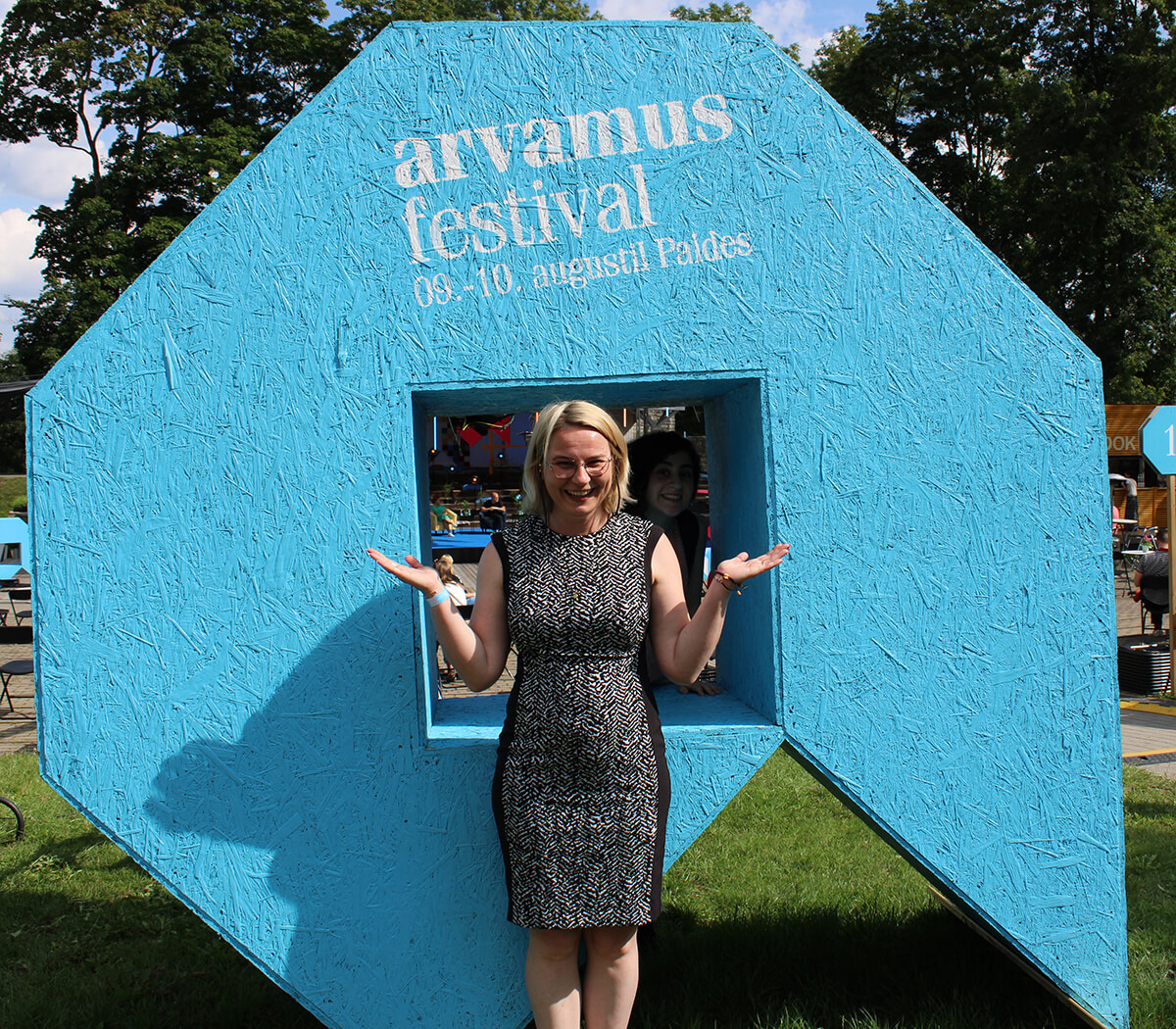

11, Hosted by Beate Conrady: Rapid Risk Assessment Workshop and Kick-off Meeting: Improvement of epidemic intelligence methodologies; European Partnership on Animal Health and Welfare, 3rd-5th September, University of Copenhagen, Denmark
12. Beate Conrady participated in the One Health Strengthening Europe Network Meeting, 8-11. September in Amsterdam
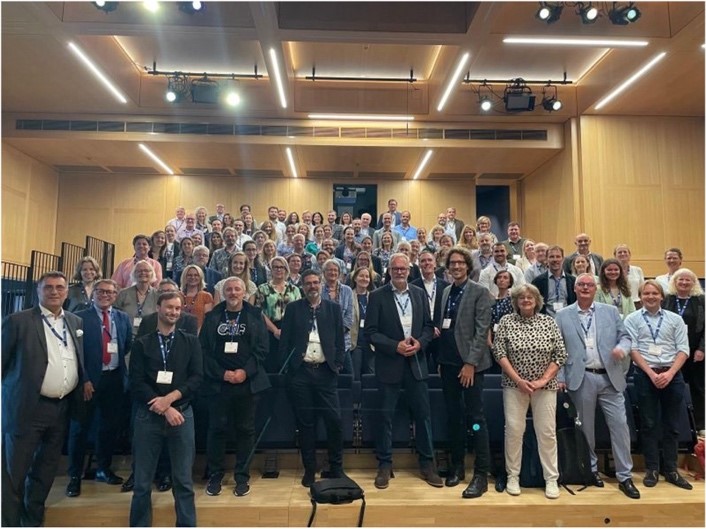
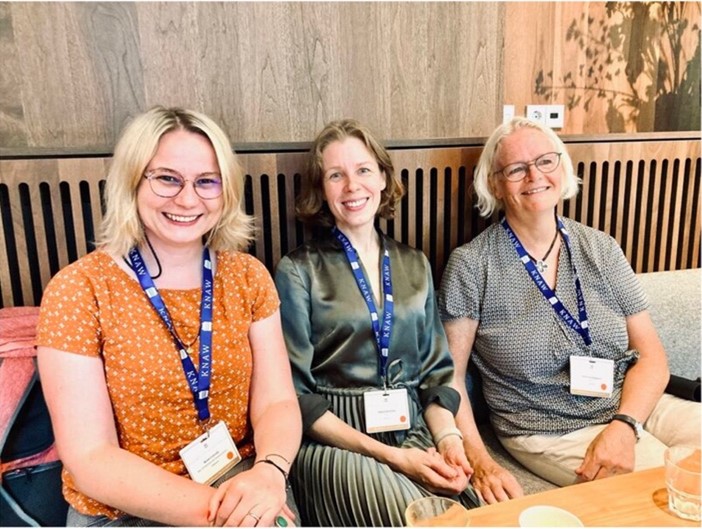
13. Poster presentation by Dima Farra at the ECVPH AGM & Annual Scientific Conference 2024 with the title: A farm-level input-output model to optimize emission reduction strategies, 11-13. September 2024 in Liverpool/UK
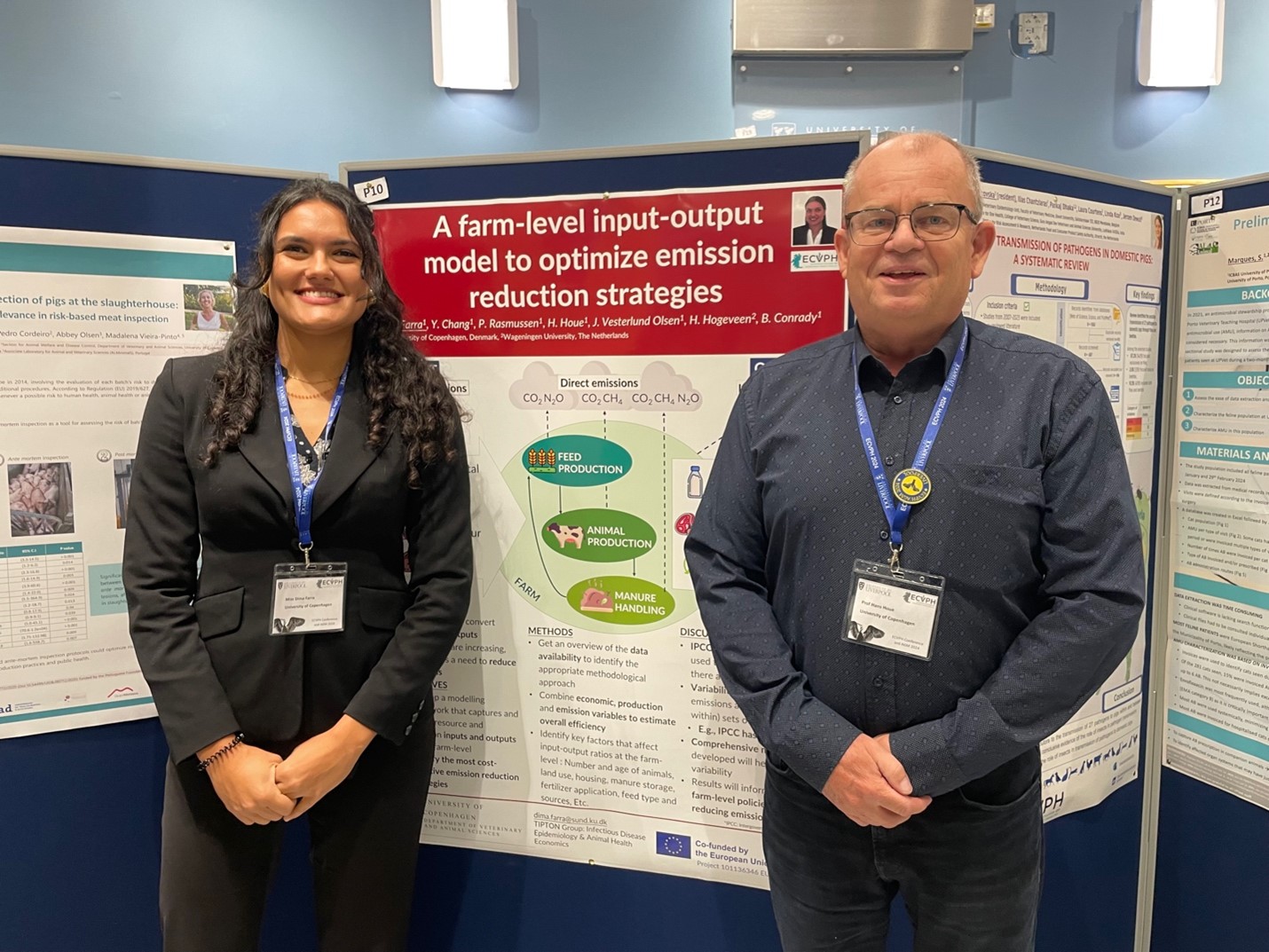
14. The TIPTON Group will present 1 oral presentation and 2 posters at the 8th World One Health Congress Cape Town, 20-23 September 2024, Cape Town, South Africa

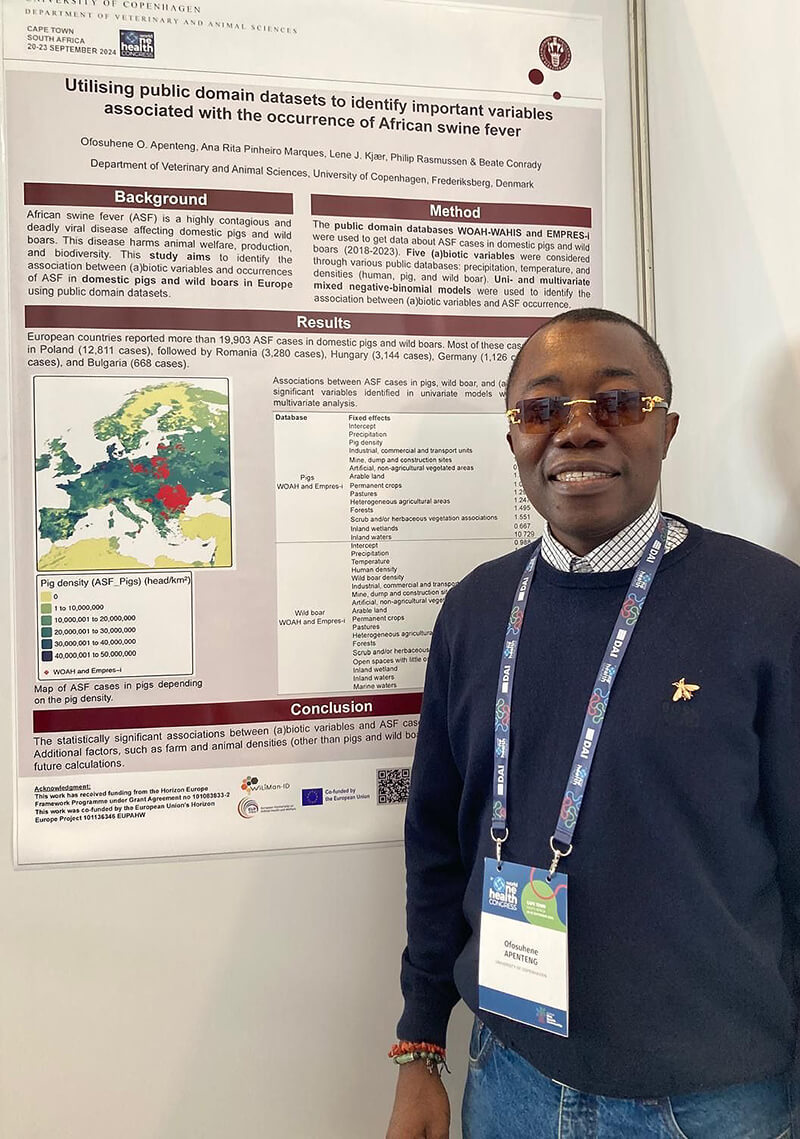
15. Open Session 2024 of the EuFMD Standing Technical Committee, 29-31 October 2024, Alcalá de Henares, Spain.
Oral presentation by Beate Conrady with the title: Can the Danish veterinary authorities achieve their key performance indicator targets in the event of a foot-and-mouth disease outbreak?
Poster presentation by Beate Conrady with the title: Impact of external biosecurity measures on the spread of FMD in Denmark
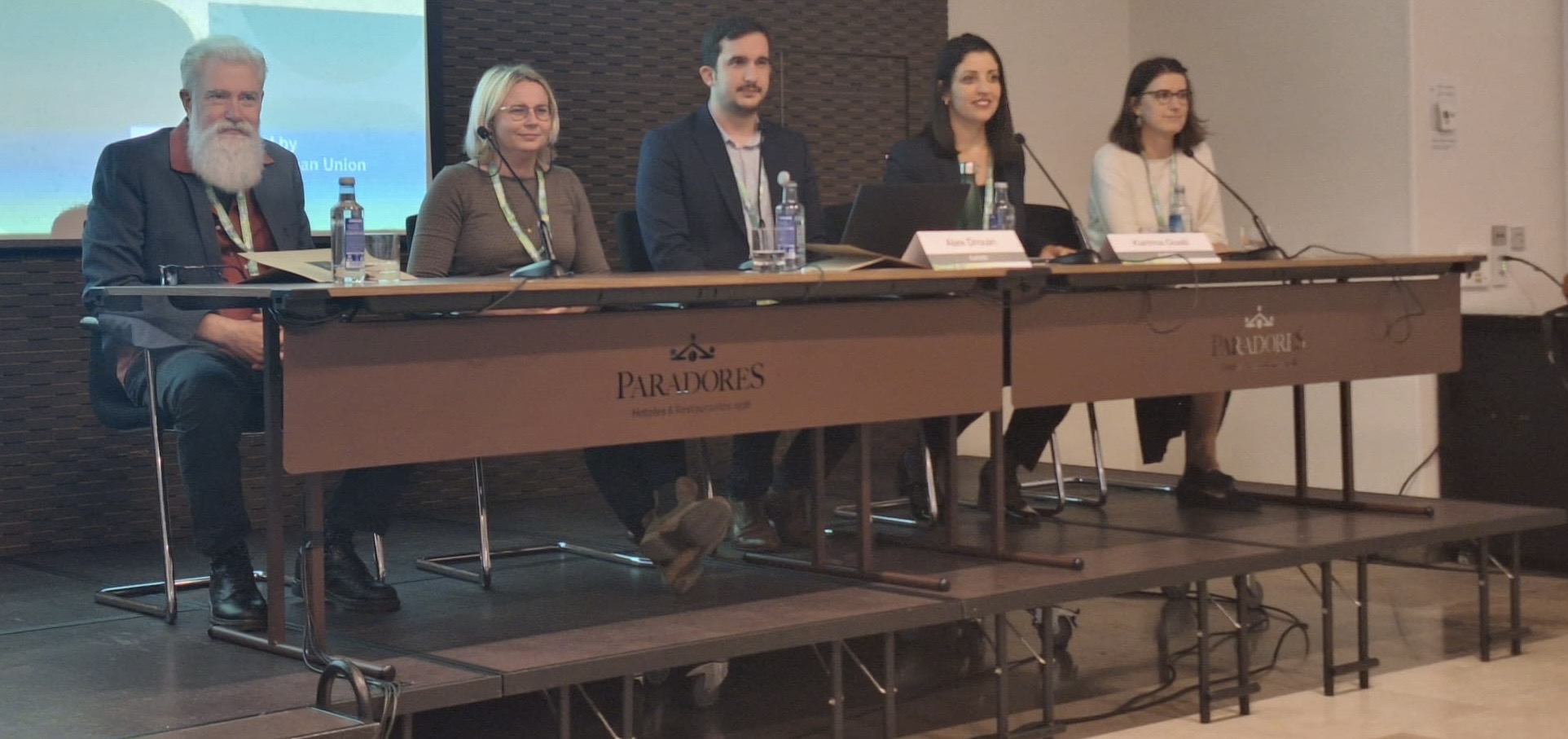
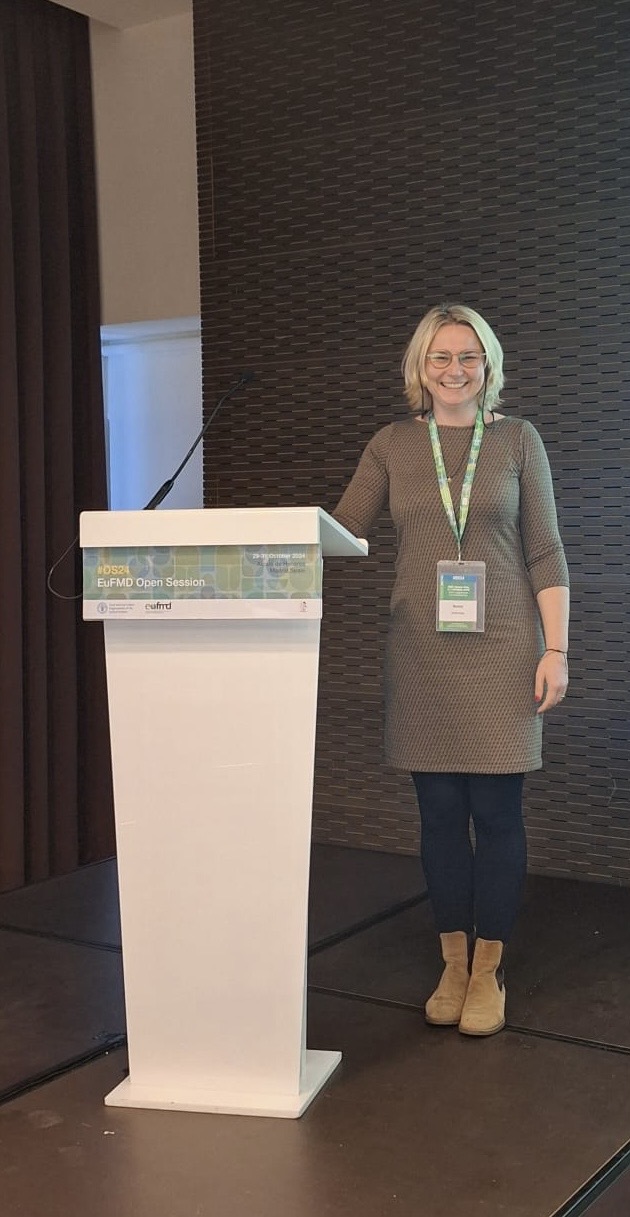
16. H2020 MOOD conference: “Monitoring Outbreak Events for Disease Surveillance in a Data Science Context”, 26th-28th November 2024, Rome, Italy
Invited oral presentation by Beate Conrady with the title: Reaching out to users and impacts for Improved Epidemic Intelligence in Europe
- The cost of the worlds top 12 dairy diseases
- Where and how much are the global losses due to dairy cattle diseases
- Salmonella continues to propagate amongst danish cattle
- (the-microbiologist.com) Current strategies ineffective in controlling salmonella dublin in danish cattle
- (scienmag.com) Current strategies ineffective in controlling salmonella dublin in danish cattle
- https://www.farms.com/news/study-shows-current-strategies-are-ineffective-in-controlling-salmonella-dublin-in-danish-cattle-212733.aspx
- https://phys.org/news/2024-07-current-strategies-ineffective-salmonella-dublin.html
- https://www.eurekalert.org/news-releases/1050380
- https://bioengineer.org/current-strategies-ineffective-in-controlling-salmonella-dublin-in-danish-cattle/
- https://swifttelecast.com/study-shows-current-strategies-are-ineffective-in-controlling-salmonella-dublin-in-danish-cattle/
- https://www.miragenews.com/current-tactics-fail-to-control-salmonella-1270254/
- https://csh.ac.at/news/controlling-salmonella-dublin-in-danish-cattle/
One Health Summer Course 2025 – University of Copenhagen & Technical University of Denmark
Are you passionate about tackling global health challenges at the intersection of human, animal, and environmental health? The International One Health Summer Course 2025 is designed to equip you with the knowledge and skills needed to drive sustainable, cross-sectoral solutions in disease modeling, animal health economics, food production, risk assessment, and more!
🔹 What You’ll Gain:
✅ Interdisciplinary and systems-thinking approaches
✅ Hands-on problem-solving and collaboration
✅ Critical and creative thinking for real-world impact
✅ A global network of like-minded professionals
📅 Course Details:
📌 Online Module: 26 May – 29 June 2025
📌 On-Campus Module (Copenhagen, Denmark): 13 - 20 August 2025
📌 Exam Date: 20 August 2025
📌 Application Deadline: 1 April 2025, 23:59 (CEST)
📌 Registration Open: February 2025
🚀 Be the game-changer our world needs! 🌎 Apply now and become a leader in One Health.
🔗 Learn more: One Health Summer Course,
GROUP LEADER
 Prof. Dr. Priv. Doz. Beate Conrady
Prof. Dr. Priv. Doz. Beate Conrady
E-Mail: bcon@sund.ku.dk
Department of Veterinary and Animal Sciences
University of Copenhagen
Grønnegårdsvej 7
DK-1870 Frederiksberg Campus
Denmark


